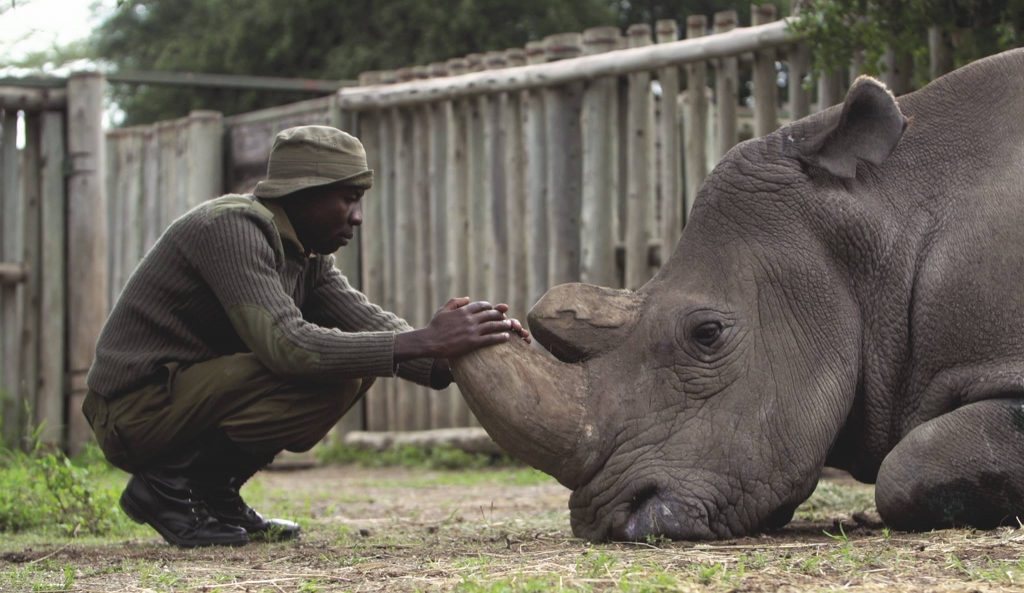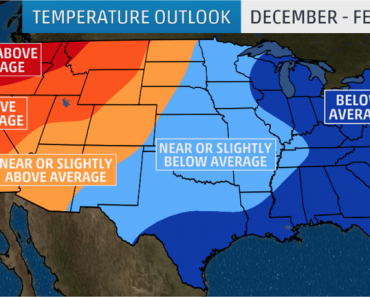
Meet James Mwenda, a rhino caregiver at the Endangered Species Enclosure taking care of the last three northern white rhinos on the planet.
The young conservationist has spent four and a half years with Ol Pejeta Conservancy in Kenya where he is the principal caretaker of Fatu, a 19-year-old northern white and Najin, her 29-year-old mother. Najin’s father was Sudan, the last remaining male of the subspecies, who Mwenda also cared for before the decision was made, just over a year ago, to euthanize him due to complications brought about by old age.
Raising the Alarm for Conservation
The passing of Sudan made headlines around the world, but the loss was very personal for Mwenda, who upon leaving high school was not able to attend university but has since achieved what he calls his childhood dream of working in conservation. Now, Mwenda is on a mission to be Sudan’s “voice around the world”, which is why he recently made a first-ever visit to the UK with the help of the international NGO Helping Rhinos.
“It’s really hard work out there on the ground, protecting the animals, it’s more like a war,” Mwenda told in an interview. The enemy in that war? The incessant demand for rhino horn, chiefly from Asia, that has eliminated the northern white from its native habitat in central Africa while decimating black rhino populations and placing constant pressure on the southern white.
Fatu and Najin, along with the males Sudan and Suni (who died of natural causes in 2014) were relocated to their spacious home in Kenya from a Czech zoo in 2009. Mwenda spends so much time with the two surviving females that he refers to them as his girls and some people joke Fatu is actually his girlfriend. He sees them as his responsibility.
That responsibility involves monitoring their health, feeding and washing them, and generally making sure they are safe. It may be hard to believe, with the species literally on its last eight legs, but around-the-clock armed guards are still needed as, given half a chance, people would still try and do them harm.
Mwenda is also one of a number of trained rangers monitoring and protecting rhinos across the wider Ol Pejeta reserve, which covers 90,000 acres and is home to the largest black Rhino population in eastern Africa. He believes Kenya has been doing slightly better in terms of the number of rhinos it has been losing to poachers compared with countries such as South
Africa, where an around 2 rhinos a day may be lost. He ascribes that to an improved awareness.
Could Technology Save Species from Extinction?
The latest technology—the fruit of Helping Rhinos’ fundraising in the US and UK—is a mobile vet unit, that allows sick or injured animals to be treated speedily. In an ideal world the rhinos would be left to their own devices, but Mwenda says with such an endangered species that is not feasible.
The northern whites, meanwhile, are so close to the brink that direct intervention has been the only option for years. In fact, the idea with bringing two of the last males and females to Ol Pejeta was that a move to a more natural habitat would get the sexual mojo back and keep the species breeding.
But over the years, it has become clear neither female rhino would be capable of carrying a pregnancy through a full and arduous 16-month term and Mwenda, who looks after them daily, doesn’t think it would be fair to do so.
Scientists from Germany, the US, the Czech Republic and elsewhere are hoping to use harvested eggs and tissue cultures, as well as sperm frozen from a number of males, to revive the subspecies. But this is a hugely expensive undertaking and one with no guarantees. It is estimated that a pure northern white calf born to a southern white surrogate mother could be the best part of a decade away.
Increased public-private partnership will be essential to developing new biotech innovations. Environmental groups, nonprofit organizations, religious groups, and government entities will need to work together to develop a consensus around the proper use of biotech tools and build public acceptance of biotech applications.
With the right genetic tools and dedicated collaboration, we may be able to turn the tide on wildlife extinction









